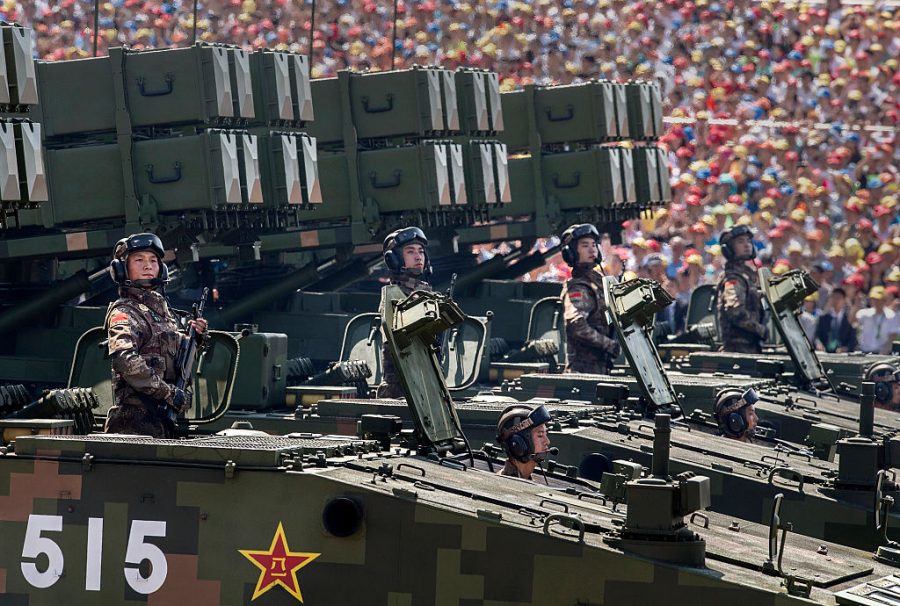
In this edition, we take a look at how the Chinese military is thinking about and preparing for the future warfighting environment.
How China plans to fight
The RAND Corporation put out a fascinating study on the operational concepts that are supposed to guide the People’s Liberation Army in combat. The report begins with a detailed explanation of how the PLA produces its doctrine. The process starts with the Chinese Communist Party’s ‘military guiding theory’, which draws upon the writings of Karl Marx as well as China’s leadership from Mao Zedong to Xi Jinping.
After the CCP develops its theory of warfare, the Central Military Commission develops the PLA’s ‘strategic guiding principles’ and ‘military strategy’, which provide key ideas for force development such as ‘active defence’. Once these force development principles have been outlined, the Central Military Commission and the Academy of Military Sciences develop operational concepts and doctrine that provide guidance on how the PLA is supposed to fight.
At a lower level, the PLA’s official media outlets feed into the development of operational concepts and doctrine for the wider military. Writing in the People’s Liberation Army Daily, Tang Jiaming provides insights into how the PLA seeks to secure a tactical advantage over its adversaries in high-intensity conflict. The article, titled ‘How to strike the enemy unprepared in informationised warfare’, identifies a number of ways in which the PLA could achieve dominance in an information-dense future battlespace.
First, Tang explains, the PLA will need superior intelligence, surveillance and reconnaissance capabilities that can secure a decision-making advantage and leave enemy forces uncertain. He writes that ‘combat operations can be seen as part of an interrelated cycle of four constituent components, [namely] detection, judgement, decision, action. Whichever side can complete this cycle the fastest in a confrontation can strip the enemy of reaction time, thereby gaining an operational advantage.’ Sound decision-making, at speed, is thus seen as the key to the PLA’s success.
Next, Tang says, the PLA will need to assert psychological dominance over enemy forces in combat. ‘An important aspect to catching the enemy off guard in a surprise attack is to target the enemy commander’s psychological characteristics by interfering with his psychological functions to delay or disrupt decision-making and take advantage of a surprise attack while he is psychologically confused, hesitant and indecisive’, Tang writes. Doing so ‘will require deep research into the enemy’s cultural traditions, psychological traits, [and] patterns of behaviour’, he adds.
Finally, the PLA will need to harness innovation to create a technological edge on the battlefield. Tang argues that the PLA has to surprise enemy forces by ‘using new technologies and equipment’ in a way that ‘fully harnesses the technological edge and new strike methods’ that are likely to emerge from the weapons systems China is developing. According to Tang, the PLA’s goal should be to develop the ‘technological edge’ needed to introduce ‘new capabilities unknown to the enemy’.
Towards ‘intelligentised’ war
All of this emphasises the importance of the PLA’s ability to fight wars through investment in ‘intelligentisation’ as a guiding principle for military modernisation. Intelligentisation is seen to be the next step for the PLA in its quest to become a world-class military, certainly by 2049 and as soon as the mid-2030s.
This will involve investing in pervasive and resilient digital networks to underpin C4ISR (command, control, communications, computers, intelligence, surveillance and reconnaissance) and making broader use of artificial intelligence to manage complex systems and networks as part of a ‘system of systems’ approach to future war.
It also demands that the PLA has the ability to attack an adversary’s network-centric forces, especially its C4ISR and ‘sensor to shooter’ links, to neutralise their ability to gain and maintain a knowledge edge.
For both applications, AI will be used to manage planning, command and decision support in a manner that, notes Elsa Kania, ‘will shape a new cognitive domain and transform the PLA’s entire approach to warfighting’. Integrating AI into the PLA’s C4ISR systems will prove crucial to its success in future joint operations.
As Western military forces grapple with the complexities of multi-domain operations in air, sea, land, space and cyberspace and across the electromagnetic spectrum, China is adding a cognitive domain that would integrate human and machine intelligence in a way that further blurs the distinction between war and peace. Rather than seeking merely to destroy a target kinetically, intelligentised warfare would emphasise political outcomes as a measure for success.
For Western military forces, this presents a challenge. Internal policy debates centre on ethical, legal and moral questions about how and whether the use of AI and lethal autonomous weapons would be consistent with jus in bello and the laws of armed conflict. It’s not clear whether China considers future war in such a way. Last year, the PLA Daily ran an article arguing that ‘[f]uture warfare will be commonly guided and influenced by a human–machine duality that will result in changes to the form and content of warfare that are hard to estimate’. The PLA’s planned integration of humans and machines into its military operations will create a combat environment in which uncertainty abounds, posing significant questions of morality and law that demand more attention from policymakers in the West.
The pace of future warfare will accelerate, giving less time for human decision-making and control, driving military forces to rely more on AI and machine intelligence to control and even decide the application of advanced ‘intelligentised’ military systems. If China is serious about proceeding down this path—and all indications suggest that it is—then ensuring a faster decision cycle through integration of AI and machine intelligence at all levels, while quickly attacking and destroying an adversary’s C4ISR networks, would allow rapid application of the types of long-range firepower at the centre of the PLA’s area-denial capability.
Conversely, the way to beat the PLA may be to deny it the ability to wage intelligentised war from the outset. The challenge, of course, is to do so effectively.

